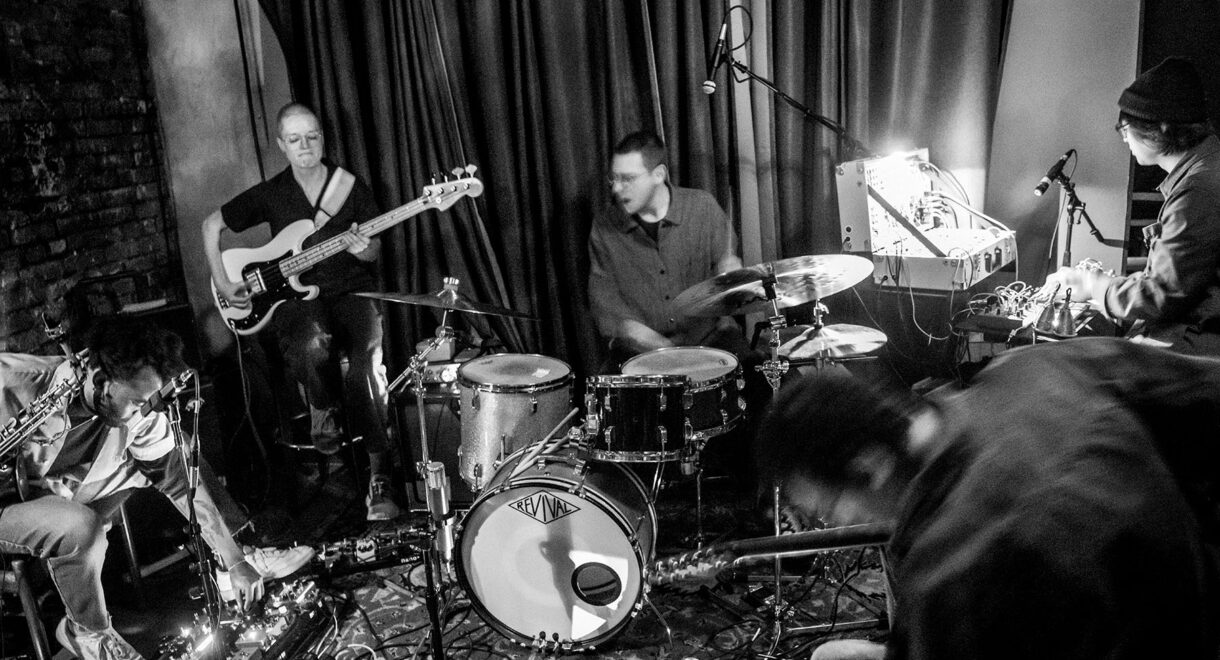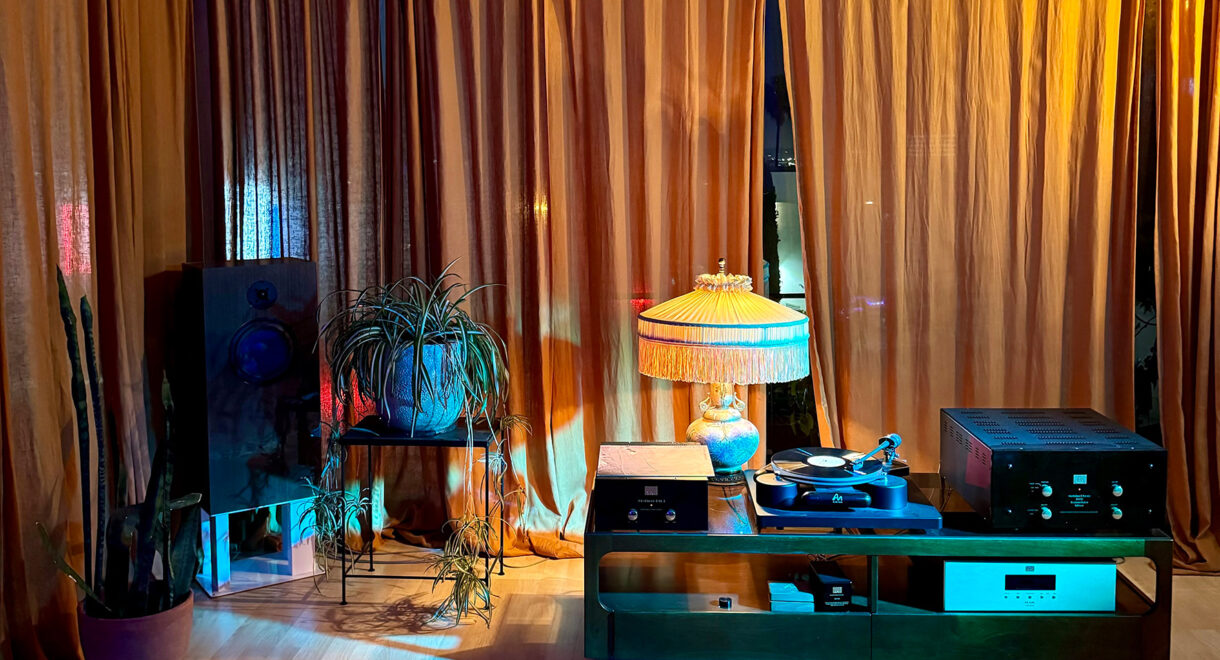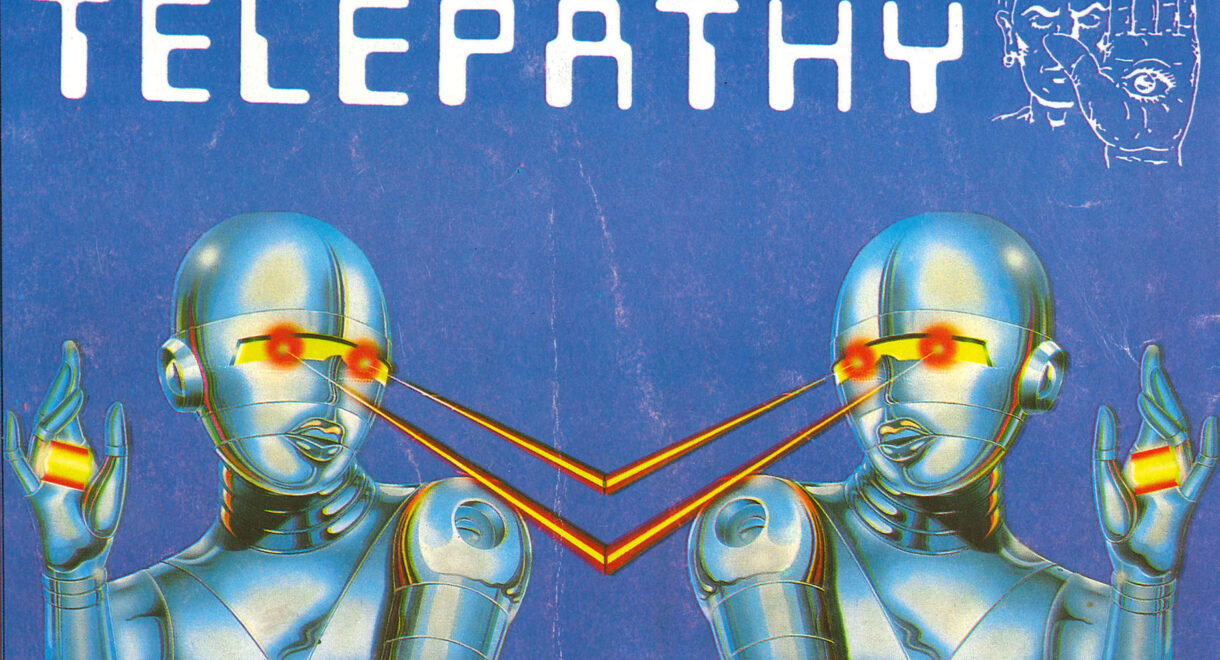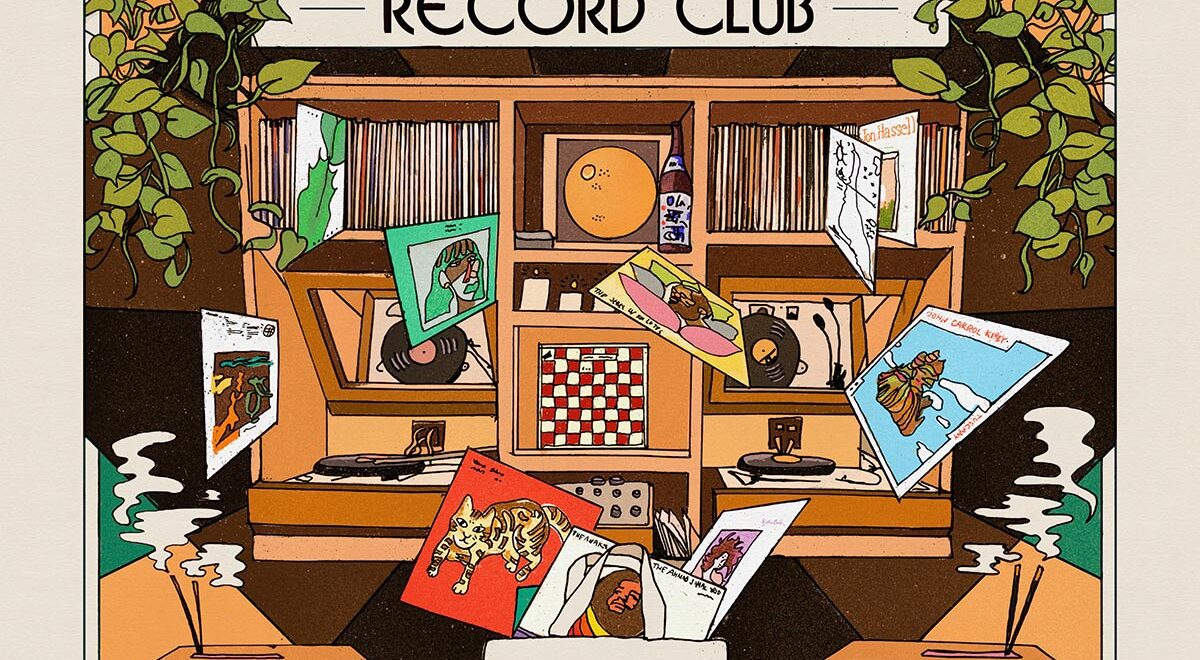In conversation with Small Medium Large, a new quintet from the burgeoning new West Coast jazz & improvised music scene. In 2018, LA-based jazz and post-rock guitarist Jeff […]
Digging In India: The long lost weird and wonderful Indian archives

In conversation with Nishant Mittal, founder of archival Indian music page Digging in India.
Better known by his Instagram handle “Digging in India,” Nishant Mittal’s unique perspective and inspired discoveries has made a fan out of many. The way Mittal approaches music is detective-like, and as he makes his many uncanny discoveries he increases the scope of — and challenges the normative understanding of — what Indian music looks and sounds like. In the past year as the world turned to their digitized lives to feel connected, Mittal was able to shine a light on unsung and nearly forgotten artists, and as his platform quickly grows, it’s clear he’s only getting started.
He phoned in from his home in Delhi in between archiving, selling records and baking (alongside his partner at their new bakery) to share where he’s been and where he’s going.
What was your first memory with vinyl or analog formats?
My parents were not music enthusiasts, so I wasn’t passed down a collection or a stash of records from my parents. I think the first time I remember seeing records was just in pop culture — Western TV shows and movies. I remember watching the movie High Fidelity, and it was all about records. I absolutely love that movie!
Soon after that I bought my first record, which cost me around 100 rupees (~1.35$). The kind you may find in the dollar bins.
My next record purchase wasn’t until a couple of years later, so it wasn’t like I fell in love instantly with collecting. I think I was just attracted to the artwork of the album at that point. The same artwork is visible on our screens, of course, but there’s something magical about the physicality of holding a treasured piece of music in your hand.
I’m curious how that relates to your own personal journey now. With that initial anchor in western media, did you feel like you have to go out of your culture to find your culture? How did those two worlds come together for you?
My love for music started with Nirvana. I was obsessed with them when I was 15 years old till my teenage years ended. I was mainly into musicians like Zeppelin, Radiohead and Leonard Cohen in my teens but ventured into indie rock, post-rock and shoegaze later on. After that I found my interest in world music with artists like Haruomi Hosono, Fela Kuti and Googoosh.
Another part of the story starts with a friend of mine, Jeff Valla from Ithica, New York, who was living and working in India at that time. He had an unparalleled passion for music and records because he grew up around record stores and also worked at Angry Mom Records in NYC. He introduced me to the Usha Iyer track “The Trip,” which is a fantastic Indian psychedelic blues-rock song from 1969 and in a way kick-started my love affair with vairious genres like Indian funk, garage, disco and synth-pop.
RIP to Jeff, the realest one.When you were finding all these new musical traditions in India, like the Indian funk you mentioned, did it change your relationship to your culture at all?
I certainly started deeply appreciating the music of my culture. I started noticing the nuances and intricacies of their composition which had never struck me as extraordinary before.
Growing up in Delhi, all I ever heard on television or on the radio was mainstream Bollywood music. So I was only accustomed to the Bollywood songs that the media fed us — the good and the bad — but there was no exposure to the lesser known music like Hindustani classical or avant garde fusion jazz. Those are the kind of sounds that you find only when you dig deep with keen interest. Some of the Bollywood evergreen songs that I’d heard before I started collecting records were sounding so different to me from a new point of view. I found myself exclaiming “Oh, wow, that’s a crazy jazz song with a wild saxophone solo going on” or “the drum breaks on this one is insane.”
Do you think that you're giving these artists a platform so they can properly be appreciated, or is what you’re sharing more casual and centered on what sounds interesting?
While I like to keep it casual on my page and share some interesting unheard-of digs, I also believe that I somewhat carry the responsibility of bridging forgotten pieces of history and showing the world our rich musical culture. Most people are not aware of the fact that our music has had a wild mix of every genre possible. Just like the Beatles, Indian bands like the Cavaliers were a ‘60s bubblegum pop rock band releasing soft ballads like “Rickshaw” and “Love Is A Mango,” Donna Summer dance and pop music can be broadly mapped to Sharon Prabhakar’s crooning on “My Body Has A Surging Fire” or “Mere Mehboob Ka Khat Aaya,” while the sister duo of Salma Agha & Sabina Agha even recorded a Hindi cover album of ABBA songs.
I often come across records which do not exist at all on the internet and have no documented history. The vinyl, songs or production label have absolutely no trace on the internet. These are the kind of finds I love because I get to tell the world that this person existed and their music existed; and not only were they f–ing good, but they need to be on everyone’s playlists.
A lot of appreciation is due to them for their contributions to our musical history. While there are artists who are super well-known and have released a thousand Bollywood soundtracks, there are some who disappeared after cutting just one record and do not exist on paper and in history if not for their record in my hands. I do my bit by shedding light on their work, fixing their Discogs pages and ripping their songs to document on YouTube.
Can you share a bit about the digging culture in India? Both for Indian records and then non-Indian records?
The serious diggers for vintage records are very, very less in comparison to the population we have. New Delhi has a population of 20 million people with around three or four record stores out of which two existed before pre-independent India so they are 80-year old standalone shops. The people digging at these physical stores for the most part are the people who were alive when the vinyl culture was thriving. These are the people who grew up in the ‘80s and are still attracted to the culture of collecting records. It seems to be changing now, the younger generation is also heading to these shops to experience the fun and frolics of digging for records at a record store.
Brand new records of international artists can be found from the comfort of your home on e-commerce websites like Amazon. Records of artists like Tame Impala, Coltrane, Kendrick etc. are easy sellers, just as they are all around the world.
The vinyl culture overall seems to be growing, which is a very great change.
This kind of music is really interesting to people all over the world, and there are plenty non-Indian DJs who claim to have a similar speciality to you. Do you think the fact you’re from India allows you to tell a more honest story about the history of music there? Is that something you think about?
I wouldn’t say that non-Indian DJs or archivists present a non-authentic version of our musical history. In my opinion they are very well versed with the nuances of our music, and if not, they are always very eager to learn more. Having said that, I think since I have more access to the language and culture of India I can stitch pieces of info here and there and present a rounded-off story.
I’m sure your favorites are always changing, but can you share a record that you really love right now?
I’ve got so many crazy stories of digging but the greatest story is of a record by a guy named Arun Amin. He has absolutely no trace on the internet apart from a couple of streaming links. In all of my purchase history I have been scammed only twice and both times were for his record, “Sri Aurobindo.” Luckily for me, the third time was a charm and I finally got the record. It’s my current favourite record and it’s unlike anything I’ve heard. Side A features devotional acoustic ballads dedicated to Indian deities and the yogis like Krishna, Meera and Shiva. Side B is completely off the hook and is wild with crazy drums and fuzzy guitars. On side B, Arun sings about hippies, sunflowers and girls.
When you're looking for records, are you mainly working with other people with private collections, or do you also do digging out in the field?
I’ve found records in all kinds of wacky places — sometimes in old bookstores, furniture stores, peoples’ basements and even roadside stalls. My most trusted source has to be antique stores but you’d never know which antique store has what in store for you as they have everything from crockery to old paintings to broken televisions.
If you’re looking for records you just need to keep an eye out, you never know where you may find records.
What are some of the most important lessons that you learned when you first started to dig for records seriously?
I think the most valuable lesson I learnt was to be careful with my spending. I realized if I’m looking for a record and if it’s really expensive, I shouldn’t jump the gun. The record always finds its way at a better price, but I need to work hard for it. At least It almost always does, and if it doesn’t, I learn to live without it. It’s good for my pocket as well.
Are there any other places in India that have a more developed vinyl collecting culture?
In my opinion the music scene in Mumbai is more developed historically and currently as well. There are a lot of new age record stores there in addition to lots of markets dedicated to selling second hand and vintage items. My first visit ever to Mumbai two years ago was very rewarding in terms of digging. I went to a market called the Chor Bazaar and since I had only one day to spend there I went to the first record store to dig. I didn’t have much time so I asked the owners to show me something I wouldn’t find anywhere else. I was stoked to see him pull out three of my most wanted records that I’d been lusting for since a long time, one of them being the Susmit Bose folk rock record “Train To Calcutta”, which he released independently in a very small number in 1978.
Is there a particular place and time in music that you're particularly interested in collecting?
Oh yes, definitely! My main area of interest is non-Bollywood Indian rock and jazz from the 60s to 90s.
There’s a song called “Yogi Please Help Me” by Mahendra Kapoor that I’m really crazy about. It was released in 1968 as a 7’ single, and it’s a record that I listen to a lot. I even played this for my set at Magnetic Fields recently and I think it got a good crowd reaction.
Have you found Discogs or other online sellers affecting the price of records in India, or do most sellers price things using another standard?
Discogs rules the pricing in India, and now most sellers refer to the price points there for pricing their records. When they have a record in their hand, the first thing they do is check the price on Discogs. So for buyers, it’s kind of bad that Discogs is affecting their prices, but as far as sellers go, it’s amazing that they know whatever they have in their hands is worth a lot.
So many people only think of ragas or Bollywood when they think of Indian music. Is that something that you want to push people past, to build excitement for all the rest of the array of genres?
It’s not wrong when people think of Indian music to be only represented by Ravi Shankar-esque music or Bollywood. It makes sense that their perception of our music is so limited because in so many Western movies, whenever there’s any Indian connection they play sitar tunes in the background. But India does have a lot of music outside of those two genres. For a while, I too thought that we have very limited music genre-wise.
Is there a holy grail that you haven’t been able to get your hands on yet?
There are a few records that have escaped me for a long time. Ten Ragas To a Disco Beat by Charanjit Singh is one of the most popular records from India. It was released in 1982 and it’s revered to be the first acid house genre record ever made. There’s another one by this rock band called Atomic Forest called Obsession 77 and is almost impossible to find. I’ve come so close to scoring that twice, but something or the other always goes wrong. The third is the most wanted Indian record these days: Disco Jazz by Rupa Sen. I found that one recently so it’s one thing off my list.
Have you ever considered doing reissues yourself?
I would honestly love to do something like this because there are so many amazing records which deserve a re-issue. But there are no record pressing plants in India. Plus, I do not have any knowledge about the business aspect of pressing records.
Instagram: https://www.instagram.com/digginginindia/
Mixcloud: https://www.mixcloud.com/digginginindia/










